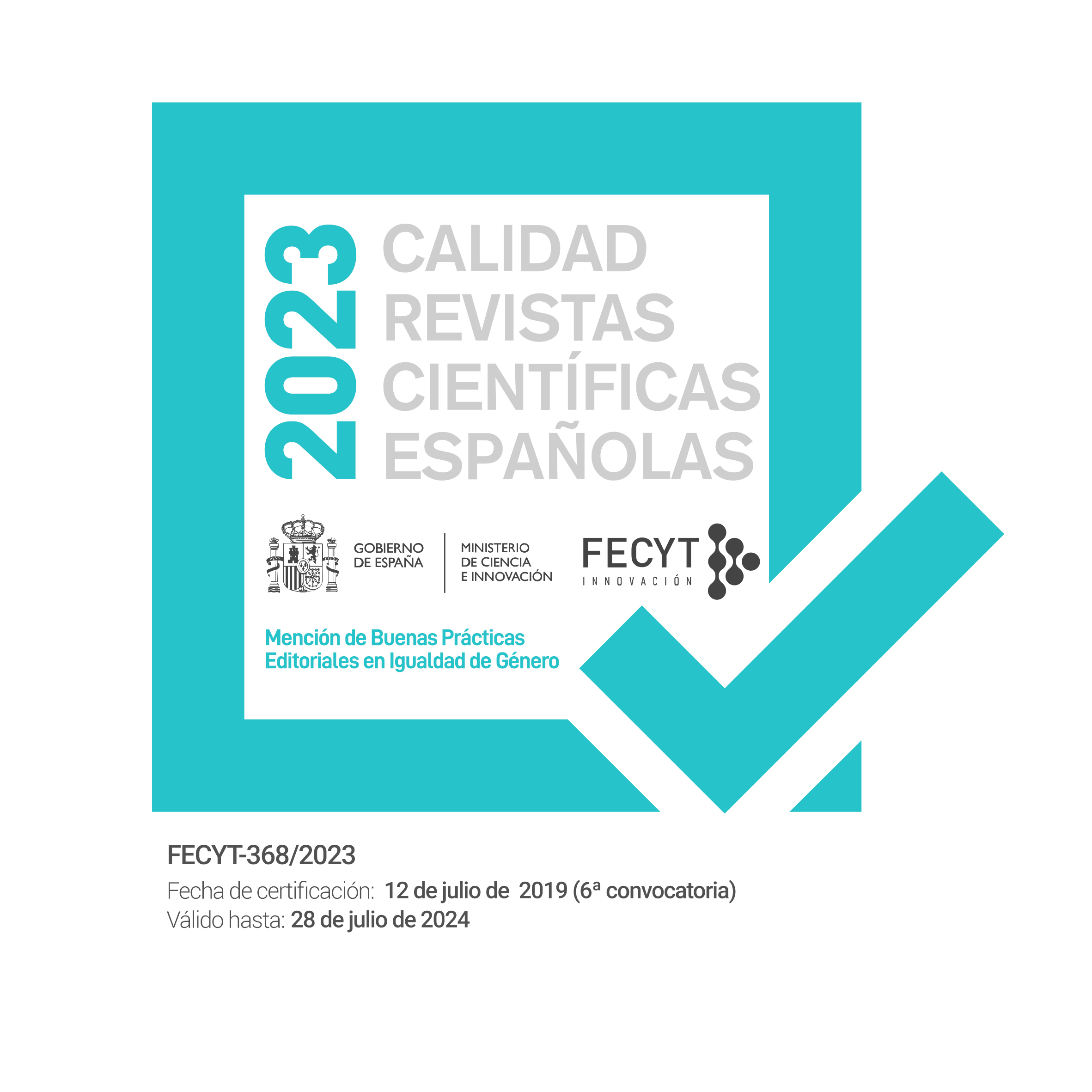A Spanish portrait : Spain and its connections with the thematic and structural dimensions of "For whom the bell tolls"
DOI:
https://doi.org/10.18172/jes.152Keywords:
Spaniards, idiosyncrasy, image, war, themes, structureAbstract
After having visited several countries in Europe and Africa, Hemingway found in Spain a land which would play a key role in his later literary career. His first stay in our country in the early twenties would mean the outset of a closed and long relationship with Spain that took almost forty years. During his different travels to Spain, Hemingway had the chance of discovering in the Spanish people a set of values and traits for which he felt a special attraction, such as violence, rebelliousness and, above all, a fatalistic vision of existence where death was inherent to life itself. In his most renowned novel, For Whom the Bell Tolls (1940), Hemingway offers a wider and deeper vision of those characteristics which made the Spanish soul so particular from his point of view. We identify some of them by analyzing the main structural and thematic elements of this novel set in the Spanish Civil War.Downloads
References
Baker, C. 1956. Hemingway. The Writer as Artist. New York: Princeton University Press.
Baker, C. 1985. Ernest Hemingway. Selected Letters (1917-1961). New York: Scribner.
Benson, F.R. 1977. “Ernest Hemingway”. Los intelectuales y la guerra de España. Eds. J.C. Corrales Egea and M. Tuñón de Lara. Caracas: Monte Ávila. 278-295.
Brenner, G. 1983. Concealments in Hemingway´s Works. Columbus: Ohio State University Press.
Broer, L. R. 1974. Hemingway´s Spanish Tragedy. Birmingham: U of Alabama Press.
Cooper, S. 1987. The Politics of Ernest Hemingway. Ann Arbor: UMI.
Dadson, Trevor “La imagen de España en Inglaterra durante los siglos XVI y XVII”. Imágenes de España en culturas y literaturas europeas (siglos XVI y XVII). Ed. José Manuel López de Abiada. Madrid: Verbum. 127-175.
Fernández-Gaichat, M. 1997. Les Espagnols à Paris à l´époque de Philipe III. Paris: Droz.
García Cárcel, R. 1992. La leyenda negra: historia y opinión. Madrid: Anaya.
Grebstein, S. N. 1973. Hemingway´s Craft. Carbondale: Southern Illinois University Press.
Hemingway, E. 1967 (1955). For Whom the Bell Tolls. Hammondsworth: Penguin.
Hemingway, E. 1995. “The Old Man at the Bridge”. The Short Stories. New York: Scribner. 106-109.
Hemingway, E. 2000. The Sun Also Rises. London: Vintage.
Hemingway, E. 2003. Death in the Afternoon. New York: Scribner.
Hönsch, U. 2000. Wege des Spanienbildes im Deutschland des 18. Tübingen: Jahrhunderts.
Iglesias, C. 1998. “España desde fuera”. España: reflexiones sobre el ser de España. Ed. Benito Ruano. Madrid: Real Academia de la Historia. 377-428.
López de Abiada, J. M. ed. 2004. Imágenes de España en culturas y literaturas europeas. Siglos XVI-XVII. Madrid: Verbum.
Nahal, C. 1971. The Narrative Pattern in Ernest Hemingway´s Fiction. New Jersey: Associated University Presses.
Núñez Florencio, R. 2001. Sol y sangre. La imagen de España en el mundo. Madrid: Espasa-Calpe.
Orwell, G. 1998. Homage to Catalonia. Harmondsworth: Penguin.
Sanders, D. 1960. “Ernest Hemingway´s Spanish Civil War”. American Quarterly Review 12 (2): 128-137.
White, W. ed. 1967. By-line: E. Hemingway. Selected Articles and Dispatches of Four Decades. New York: Scribner.
Downloads
Published
How to Cite
Issue
Section
License
The authors retain copyright of articles and authorize Journal of English Studies the first publication. They are free to share, redistribute, and/or reprint the article without obtaining permission from the publisher as long as they give appropriate credit to the editor and the journal.
Self-archiving is allowed too. In fact, it is recommendable to deposit a PDF version of the paper in academic and/or institutional repositories.
It is recommended to include the DOI number.
This journal is licensed under a Creative Commons Attribution 4.0 International License










